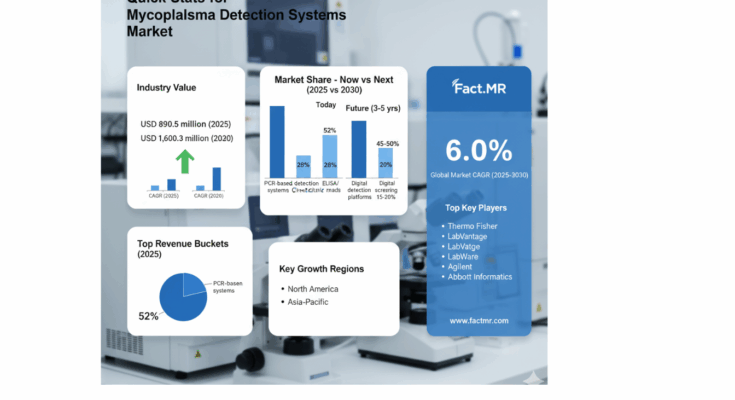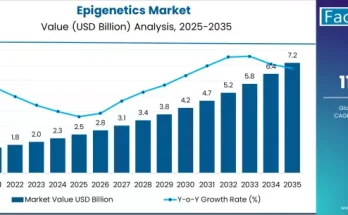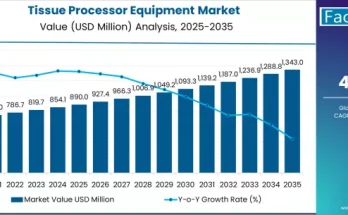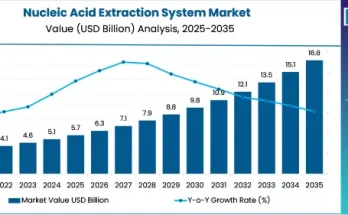The global pH control market is entering a pivotal growth phase, projected to expand from USD 4.6 billion in 2025 to USD 6.6 billion by 2035, registering a compound annual growth rate (CAGR) of 3.7%. The expansion is fueled by increasing demand for precision acidification, automated pH monitoring, and advanced formulation capabilities across food, beverage, and specialty chemical industries worldwide.
pH Control Market Dynamics and Growth Phases
The first half of the decade (2025–2030) will see the market grow from USD 4.6 billion to USD 5.4 billion, representing 40% of the decade-long growth. This phase is characterized by rapid adoption of citric acid-based pH control systems, driven by rising food production volumes and increasing consumer demand for clean label ingredients. Citric acid, known for its versatility and natural origin, continues to capture a dominant 41% share of the market, supported by beverage applications that demand consistent taste profiles and quality.
From 2030 to 2035, the market is expected to reach USD 6.6 billion, contributing the remaining 60% of growth. During this period, adoption of multi-functional pH control systems, automated dosing solutions, and digital monitoring technologies will drive market expansion. These advancements enable real-time adjustment, integration with process control systems, and enhanced formulation optimization, signaling a shift in how food processing facilities approach quality management and operational efficiency.
pH Control Market Segmentation Highlights
-
By Product: Citric acid remains the leading product (41%), followed by phosphate-based systems (33%) for their buffering capacity and stability enhancement, and other specialty pH control agents (26%) tailored for niche formulations. Natural and organic acidulants are expected to see accelerated adoption in line with clean label trends.
-
By Application: Beverage production leads with 37% market share, driven by growing consumption of functional drinks and processed beverages requiring precise pH management. Bakery and confectionery applications account for 32%, and dairy/other applications comprise 31%, reflecting diverse processing requirements.
-
By Function: Acidulants dominate (44%), supporting taste enhancement, preservation, and product optimization. Buffers and stabilizers complement these applications, providing targeted pH control solutions for specific product categories.
-
By Region: North America is the largest market, led by the USA with a 4.1% CAGR, driven by established food processing infrastructure and clean label adoption. Europe shows steady growth, with Germany (3.4%), France (3.3%), and the UK (3.2%) maintaining market stability. East Asia, particularly South Korea (3.2%) and Japan (3.0%), demonstrates moderate growth supported by food processing modernization.
pH Control Market Drivers Fueling Market Expansion
-
Clean Label and Natural Ingredient Trends: Consumer preference for transparency and organic ingredients drives demand for citric acid and other natural acidulants.
-
Beverage Industry Growth: Increasing consumption of functional beverages and processed drinks requires precise pH control to maintain taste, shelf stability, and regulatory compliance.
-
Automation and Quality Standardization: Food processing facilities are adopting automated dosing systems and real-time monitoring to achieve consistent product quality and operational efficiency.
-
Multi-functional Ingredients: Growing interest in acidulants that provide pH control, preservation, and flavor enhancement is boosting adoption of integrated solutions.
pH Control Market Challenges and Market Restraints
Price volatility of raw materials, including citric acid and phosphates, poses a challenge for cost management. Additionally, regional regulatory complexity and approval requirements may slow new product introduction. Technical adoption in small-scale facilities may be limited by infrastructure or expertise gaps, presenting opportunities for suppliers to offer support services and turnkey solutions.
pH Control Market Regional Insights
-
USA: Leads global adoption with mature food processing infrastructure, major centers in California, Illinois, and Texas, and a strong focus on clean label solutions.
-
Mexico: Rapid growth driven by food industrialization and modernization of beverage facilities, emphasizing cost-effective pH control systems.
-
Germany: Maintains technology leadership with premium installations, integration with automated processing platforms, and high compliance standards.
-
France & UK: Stable growth supported by quality assurance initiatives, regulatory compliance, and integration of natural ingredient solutions.
-
South Korea: Emerging market adopting automated dosing and specialized pH solutions aligned with government-supported food processing modernization.
pH Control Market Competitive Landscape
The market comprises approximately 20–25 credible players, with the top five holding 45–50% of market revenue. Leading companies include Tate & Lyle, ADM, Cargill, Corbion, Jungbunzlauer, Kerry Group, DSM-Firmenich, Novozymes, FBC Industries, and Archer Chemicals. Market leadership is maintained through robust global supply chains, technical support, regulatory expertise, and integrated solution offerings. Margin opportunities exist in value-added services such as formulation support, automated dosing integration, and process optimization programs.
pH Control Market Strategic Imperatives for Manufacturers and Stakeholders
-
Offer natural, clean label solution packages, including application protocols, technical support, and regulatory guidance.
-
Integrate automated dosing, digital monitoring, and process control systems to meet modern production requirements.
-
Develop value-based pricing models, combining ingredient costs with transparent service tiers and subscription-based optimization services.
-
Prioritize multi-functional ingredient systems that provide pH control alongside preservation, taste enhancement, and process efficiency.
pH Control Market Conclusion
The pH control market represents a strategic growth opportunity for manufacturers and industry leaders. As food processing, beverage production, and specialty chemical sectors continue to modernize, adoption of advanced pH management technologies will become essential. Companies that provide innovative, integrated, and compliant solutions stand to capture significant market share while driving operational efficiency, regulatory compliance, and consumer trust in an increasingly quality-driven global food landscape.
Browse Full Report : https://www.factmr.com/report/467/ph-control-salt-market



